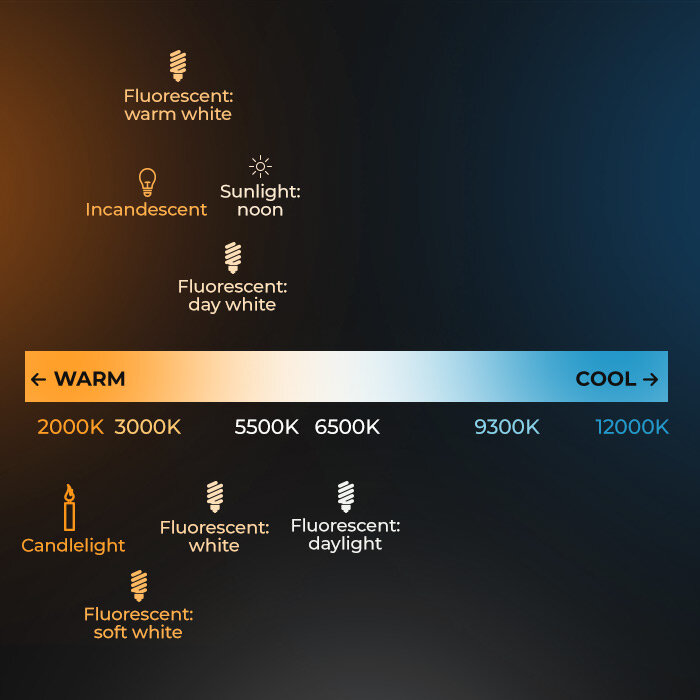How Artificial Lighting Affects Paint Colors
Have you ever been perplexed by how the paint on your walls appears differently throughout the day? (Most of us have. You too? Read up on Color Inconstancy here.)
Thankfully, choosing the right light bulbs can enhance the color of your walls and create an inviting environment at any time of day.
First, a quick primer on light temperature.
Lightbulbs come in a range of temperatures, measured in K (Kelvins). The most helpful way to think of this is in the terms in which light temperature was discovered in the 1800s by the British physicist, William Kelvin. Kelvin lit a black piece of carbon and watched the flame glow from a deep red to various shades of amber, yellow, bright white and finally, a bluish white at the hottest temperature.
1700K light is very warm and matches a candle flame. On the other extreme end are LCD screens which are quite cool and can reach almost 9500K.
What is “daylight”:
Bright daylight at noon is about 5000K. Translated into artificial light, it’s about the equivalent of a 3500K bulb. This sounds appealing, but that’s not what you necessarily want for your home. I personally wouldn’t want mid-day sun beaming at me as I’m relaxing before bed. It may be counter-intuitive, but a 3500-5000K bulb does not produce the most natural-looking light and can actually skew your paint colors more than a softer white bulb will.
Here is how lightbulb temperature will influence your paint colors and living space:
Cool bulbs (3500K-5000K):
Reserve these for workstations, garages or task-oriented spaces in a kitchen.
Will make warm paint colors look muddy and cool colors look bright.
White bulbs (3000K-3500K):
Best for illuminating common area living spaces.
Will subdue warm paint colors and make cool colors seem richer.
Warm bulbs (2000K):
Best for living rooms, dens or bedrooms where you want a warm, cozy ambience.
Will subdue cool paint colors and make warm colors feel richer.
Color in Space consultants recommend 2400-2500K bulbs, which is the ideal temperature for Benjamin Moore paint colors.
I personally am comfortable recommending 2700K bulbs, which is the warmest LED bulb available. Lately I’ve been noticing an increased taste for this temperature. It’s a a soft white on the cooler side, so it feels fresh and clean while still creating a warm and inviting ambience. It also pairs well with contemporary design, which includes hard finishes composed of gray, black and white.
Reserve anything cooler than 2700K for kitchens or bathrooms, but make sure to adjust your paint colors accordingly, since warm colors will look dirty and cool colors will look brighter. Mid-tone soft-whites or grays with subtle blue undertones will look best in this lighting. Saturated or dark paint choices will look harsh.
Follow these tips and you’ll be satisfied with your paint color at any time of day. Our perception of color will shift with the light as the sun’s position changes and we adjust our interior lighting. This is a fact of nature to be embraced! If you make intentional choices and consider paint colors together with your lighting choices, the effects will be beautiful.


